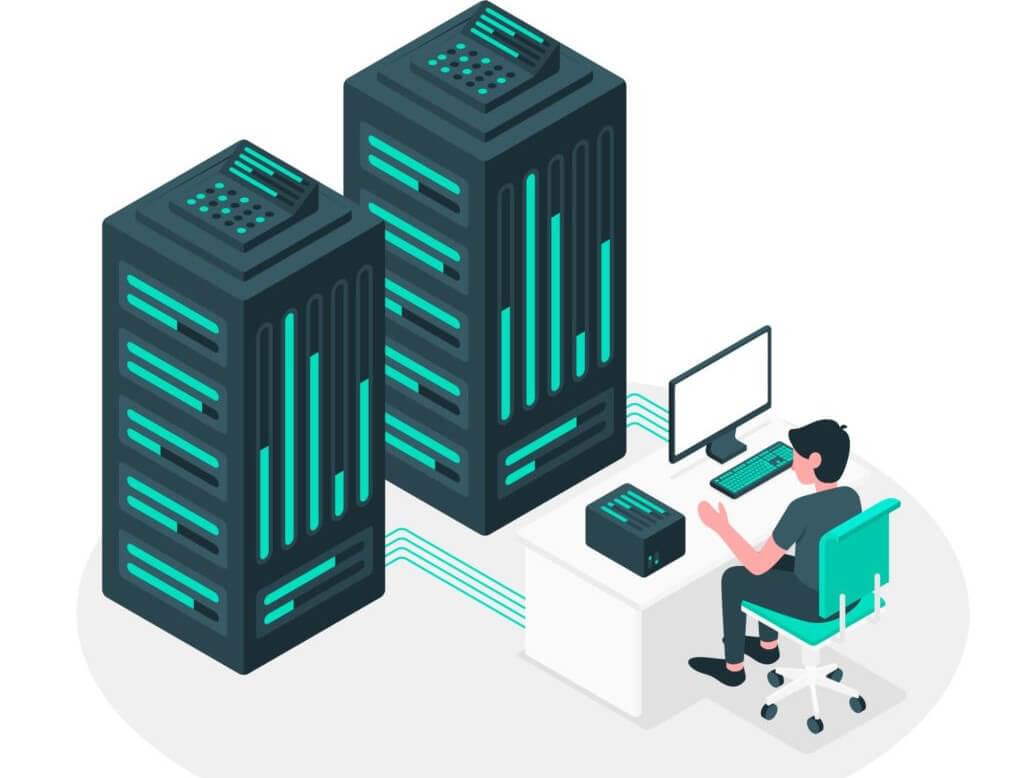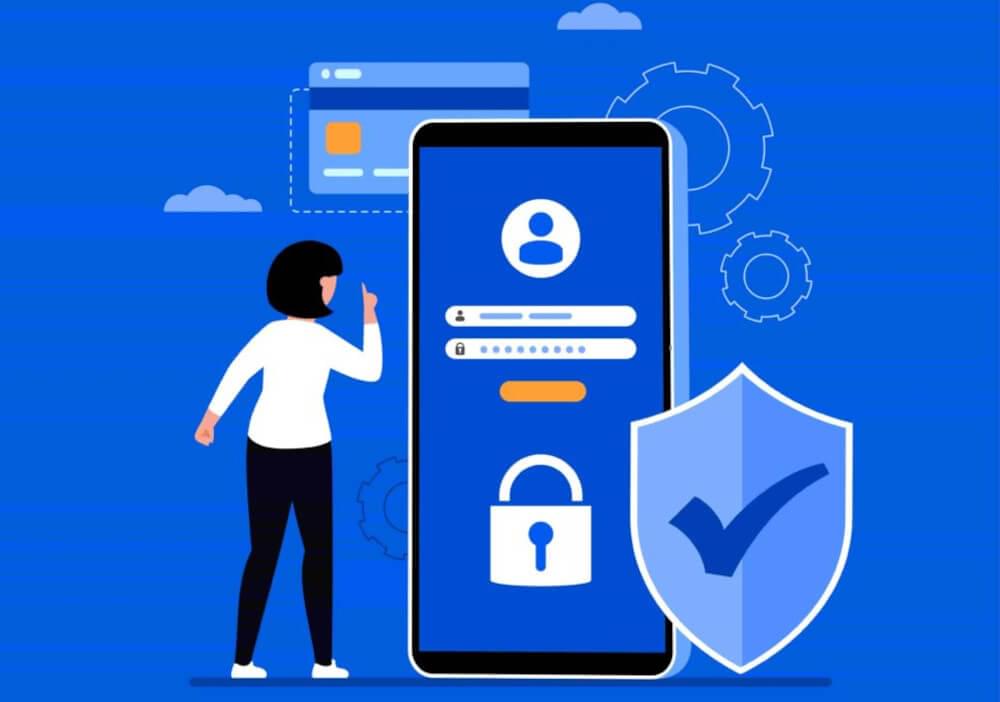Web scraping is the act of creating an agent that can automatically scrape, parse, and download data from the web. Extracting small websites usually causes a scraping problem. In the case of larger or more complex websites like LinkedIn and Google, there is a high possibility of getting rejected requests and even getting IP blocked. Hence, it is crucial to know the top and most reliable strategies for scraping data without being detected and blocked.
If you want to avoid blocked while scraping websites, then you are at the right place. We will talk about your challenges and provide you with all the smart ways to dodge various blockages and hurdles. Let’s begin, shall we?
Why Scrape Websites?
Web scraping is a technique with massive benefits as more companies move towards a data-driven approach. The benefits and reasons for using web scraping are many some of the essential usages of web scraping are the following:
E-commerce: Web scrapers can extract data from numerous e-commerce websites, particularly data relating to the pricing of a given product for comparison and analysis, these data assist firms in putting strategies in place and planning ahead of time based on data trends. On the other hand, manually keeping track of prices is not viable.
Lead Generation: Lead generation is vital for a company without new leads to fuel your sales funnel, you won’t attract clients and develop your company. Most businesses’ usual way is to buy leads from one of the many sites selling targeted leads. Scraping competitor websites, social media, and company directories with web scraping helps firms generate new leads.
What Are the Main Web Scraping Challenges?
Your scraper will start going through these web pages, collecting and organizing the information and automatically saving them to your database, you will use this data wisely and efficiently, analyzing it, improving your brand, and in no time you’re a millionaire, CONGRATULATIONS!
But wait, there is a twist. Even though part of the data you’re going through is public, websites welcome users who visit them to buy products. Also, they welcome crawlers from search engines like Google so that they can appear on its first search result page, but since you are not here to buy and you’re not Google, “unconventional” users aiming to extract large amounts of data will not be welcomed, and websites will utilize a lot of tools and obstacles to detect and block such users. This is why it is essential to use a reliable scraping tool that will help you in hiding your scraping activities.
Websites have their own “dos and don’ts” list, which is present as a “robot.txt” file. It defines the rules you must follow while visiting, such as what data to scrape and how much and how often you can scrape. For these websites, one human user is one client with one IP address with a specific access speed. Any unusual behavior involving downloading large amounts of data and performing repetitive tasks and requests in a specific pattern within a specific time that exceeds the usual time from one single user will get you detected and blocked.
Websites set rules like traffic and access time limits for every user and set robot detection tools like setting password access to data and CAPTCHA (Completely Automated Public Turing test to tell Computers and Humans Apart). There are also traps called honeypot traps in the form of links in the HTML code that are invisible to human users but visible to robot scrapers. When the scraper finds these links and browses them, the website will realize that the user is not a human, and all its requests will be blocked.
This set of obstacles mentioned above is also accompanied by another set of challenges related to the scraper’s algorithm and intelligence. It refers to the ability to deal with dynamic websites and websites with changing layouts and accuracy, as well as the ability to filter and get the required data with speed and efficiency in a short time.
Interested in Scraping Data Without Being Detected and Blocked?
If yes, then we have got plenty of ways how to do it!
1: Use a Proxy Server

A proxy server is a type of router that acts as a connection between users and the internet. It is a virtual address assigned to your computer to transfer, receive data, and authenticate your device. This IP address sends the relevant data to your computer whenever you browse the internet. An IP address is used to recognize and find all the connected devices to the internet. Categorically, IP addresses are of two types:
- IPv4
- IPv6
A proxy server is an internet server that has its IP address. Whenever you make a web request, it first goes to the proxy server, which requests on your behalf, gets the data, and redirects you to the web page to connect with it.
If you try to scrape the web with the same IP address, there is a high possibility that the web server detects your IP address and blocks you. You must change your IP address each time you request to enjoy web scraping without getting IP blocked.
Rotating proxies is the best way to avoid blocked web scraping requests, as it assigns a new IP address from its pool of proxies. The process in which assigned IP addresses are allocated to a device at different scheduled or unscheduled intervals is called IP rotation. Utilizing the IP addresses that are periodically rotated is a proven way to scrape website without getting blocked. The rotating IPs technique aims to make it appear as a human accessing the website from various locations worldwide rather than a bot.
Although tons of free proxies are accessible, many come with several drawbacks, including collecting data and poor performance. Furthermore, since many individuals use these free proxies, they have already been labeled or blocked. Alternatively, you can pay for a proxy service that can give you privacy, security, and high performance and allow you to scrape website without getting blocked.
IP Rotation Methods:
The active connection through ISP (Internet Service Provider) is already connected from a pool of IPs. When connecting and disconnecting occur, the ISP automatically assigns another available IP address. Different methods used to rotate IP addresses by Internet Service Providers are as follows:
- Pre-configured IP Rotation: Here, rotation is pre-built to occur at fixed intervals, in which a new IP address is already assigned to a user when the fixed time elapses.
- Specified IP Rotation: In this method, a user chooses the IP address for a generous connection.
- Random IP Rotation: In this method, a user has no control over assigning a random, rotating IP address to each outgoing connection.
- Burst IP Rotation: The new IP addresses are assigned to the users after a specified number, usually 10. The eleventh connection will get a new IP address.
Rotating IP addresses is considered best in hiding your scraping activities.
2: The Delay Between Each Request
Slow down the scraping. This is an intelligent way to avoid blocked web scraping requests. The scraping bots that are automated work faster than humans. Web scraper-defeating software can identify such speeds as those of a non-human visitor. It is not a good idea to send many requests to a website in a short period. Allow for some breathing room between them. You can imitate human behavior by adding delays between the requests to avoid scraper blocking and scrape website without getting blocked.
3: Use a Headless Browser
It is simple for a website to link a request to a genuine user. Recognizing and defining a request is simple by looking at its fonts, cookies, and extensions. Websites, of course, can recognize browsers and spot the scrapers. A customized headless browser is recommended for smooth web scraping without getting IP blocked.
A headless browser is a browser where we cannot see anything on the screen. The program runs in the backend, and nothing appears on the screen. A headless browser hides the fonts, cookies, and other users’ identifiable information hence, the website will get your requests but not associate them with your device.
4: Switch User-agents
A user-agent is a string in an HTTP request header that identifies the browsers, apps, or OS that connect to the server. Each browser has user-agents other than these bots, and crawlers like Google bot and Google AdSense also have user-agents. If you make a lot of requests with the same user agent, you can get blocked. It’s essential to change your user agent frequently to get around barriers to scraping data without being detected. Create several user-agents and set up automatic switching to scrape website without getting blocked.
5: Use a CAPTCHA Solving Service
Most websites use CAPTCHAs to force crawlers and even real users to solve them at least once before considering them as trusted users. Solving captchas is the most common approach to get around practically all anti-scraping measures.
Luckily, third parties can bypass captchas by API at a specified cost. All you have to do is register with them, pay, and follow their instructions to bypass captchas.
The word CAPTCHA stands for Completely Automated Public Turing Test to tell Computers and Humans Apart, used to detect whether a user at a particular site is a robot for phishing or harmful purposes or a general user approaching specific available data on that web page.
Many websites have integrated algorithms to identify and differentiate a human and a robot visitor to the sites. Web scraping APIs have built-in methods to deal with the dynamic techniques that may block web data scraping. The scraping APIs get easily integrated into your applications by setting up various proxies with dynamic infrastructure. They also take care of the CAPTCHAs and help you in minimizing the risk of website bans during scraping.
6: Store Cookies
Through saving and utilizing cookies, you can get around a lot of anti-scraping protection. Usually, CAPTCHA providers keep cookies once you complete a CAPTCHA. After you use the cookies to make requests, they don’t check whether you’re an authentic user or not, so saving cookies is a great way to bypass anti-scraping measures and avoid blocked web scraping requests.
7: Don’t Scrape Data Behind a Login

If you need to sign in to a web page, the scraper will submit information or cookies for each page request. As a result, they’ll be able to tell whether you’re using a scraper immediately, and your account will be blocked hence, scraping data behind the login is not advisable.
8: Setting Up Subsidiary Requests Headers
Request and response messages are part of the header section components of HTTP (Hypertext Transfer Protocol). They define an HTTP transaction’s operating parameters. By creating and configuring subsidiary request headers, you can determine how your content will be served to the users. Moreover, it will help you in minimizing the risk of website bans during scraping.
9: Avoid Honeypot Traps

A honeypot is a safety measure that sets up a simulated trap for attackers to fall into. Websites use honeypot traps to detect and prevent malicious web scraping. The honeypot traps are links installed in HTML that are invisible to regular users, but the web scrapers can catch them. The websites use this trap to detect and block the web scrapers, so it is vital to see whether the website uses this trap while scraping make sure your scraper only follows the visible links.
Measures to Stay Safe from Honeypot Traps:
Some of the essential measures that you can use to avoid blocked web scraping requests and stay safe from honeypot traps:
- Check Terms & Conditions: The first important thing you need to do is make sure that the website you want to scrape has any harmful content for web scraping by visiting their terms and conditions. If there will be anything regarding the dislikes of web scraping, stop scraping their website, and it is the only way you can get through this.
- Load Minimization: Consider reducing the load of all the websites you are trying to scrape. Continuous load on websites might make them cautious towards you. Load minimization is to be carefully conducted for every website or web page that you intend to scrape data.
- Choose a Suitable Web Scraping Tool: The web scraping tool you use should differentiate its measures, transpose its scraping pattern, and present a positive front to the websites. So, in this way, there will be no issue or alarming situation for you, making them defensive and over-sensitive.
- Use of Proxy APIs: For web scraping, use multiple IP addresses. You can also use proxy servers, VPN services, or Crawlbase APIs. Proxies are pretty efficient at avoiding website blocks during scraping.
- Avoid Honeypot Trap by Visiting ’robots.txt’: Getting a glimpse of the “robots.txt” file is mandatory. It will help you get insight into the website’s policies. All the details related to web scraping are mentioned here.
10: Using Google Cache
Scraping website data from Google’s cached copy is another way to scrape website without getting blocked. If you try to access a blocked website directly, your request will be rejected. Using Google’s data copy to scrape web pages affects how you access them. Although it isn’t a perfect solution, it works for most websites.
11: Detect Website Changes
Websites generally have distinct patterns and themes, leading your scrapers to fail if the website owner changes the layout, as it is tricky to scrape several designs. To ensure that your web crawler is effective when the website changes its structure, you must identify these changes with your web scraper and develop an ongoing monitoring solution.
Web scraping indeed brings various challenges, but one can overcome all and scrape websites without getting blocked with proper strategy. For those who seek an even smoother process, using a platform to get web data can streamline the journey, avoiding common obstacles like CAPTCHAs and IP blocks while offering scalable solutions. Moreover, it is advisable to use a web scraping tool for your data extraction need, which comes with IP rotation and CAPTCHA solving and prevents you from getting blocked. Crawlbase is one such tool you must check to extract thousands of websites without getting blocked.
Bottom Line - Choose a Reliable Web Scraper
A reliable scraper must deal with such obstacles and challenges mentioned above, but how? The scraper’s activity on a website needs to go undetected and masked this can be done using a rotating proxy. A “Proxy” is a middle gateway between your device and the website, meaning that your activity will be masked and hidden behind the proxy’s IP since your requests are being routed through the other server, that of the proxy. Then, the proxy will keep changing, thus not drawing attention to one single IP.
Many web scraping services rely on proxy management when doing their work, but our Smart AI Proxy has excelled in this domain, where the proxies we provide are reliable and come not only from data centers but also from residential and mobile sources. Also, the bandwidths for these proxies are unlimited, so you don’t have to worry about scraping massive pages and downloading as much information as you want.
Moreover, Crawlbase has a Crawling API to avoid dealing with proxies and blocks and get raw HTML web data and a Scraper API to auto-parse web data. Scraper API of Crawlbase uses very smart and efficient machine learning algorithms that enable you to bypass robot detection techniques such as CAPTCHA and other tools websites use, not to mention our easy-to-use application programming interface (API), which enables you to start working in less than 5 minutes.









